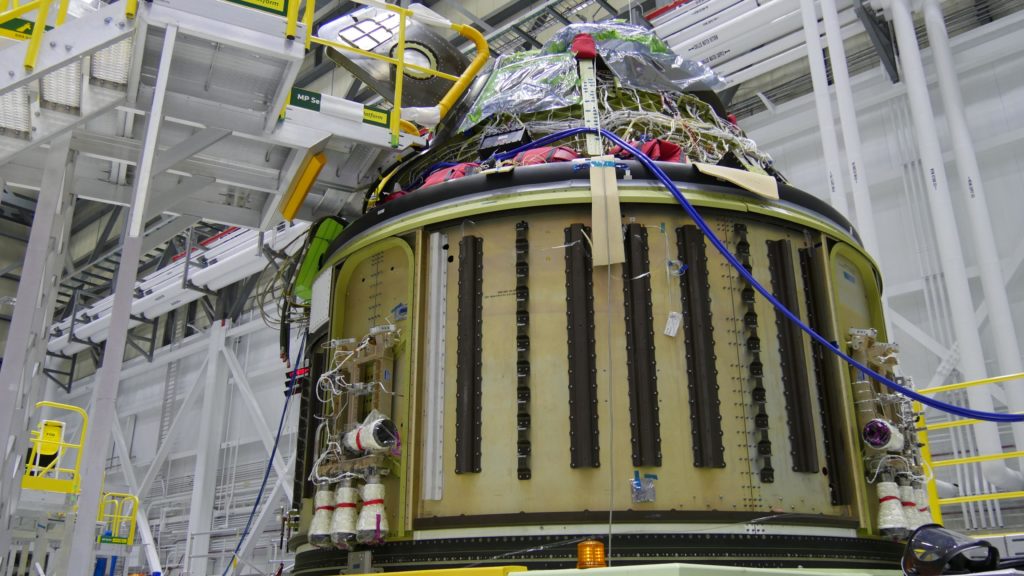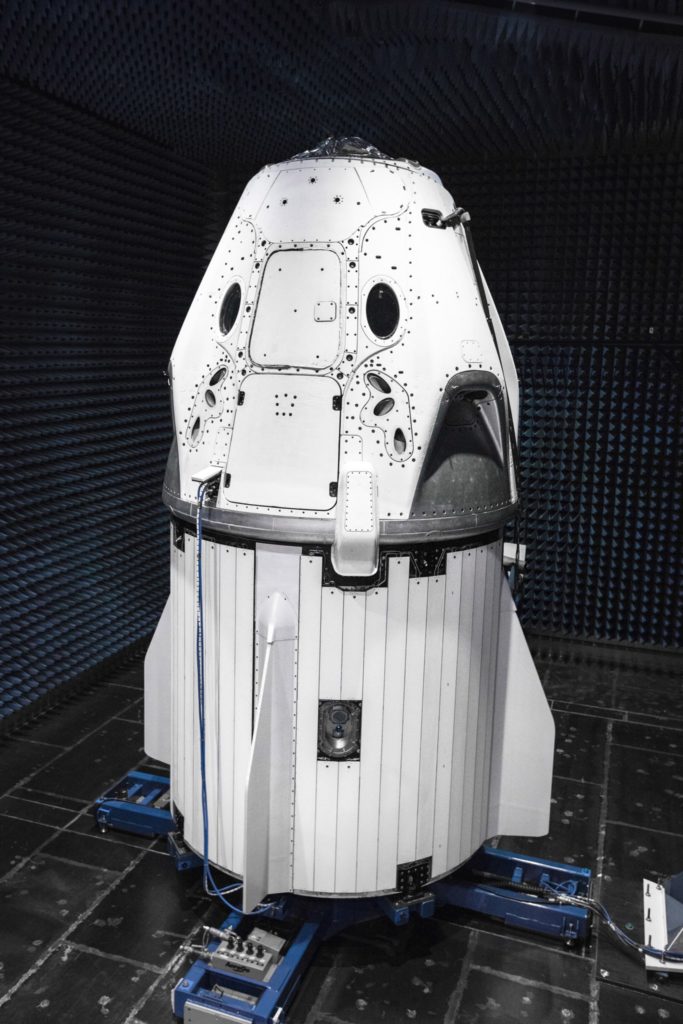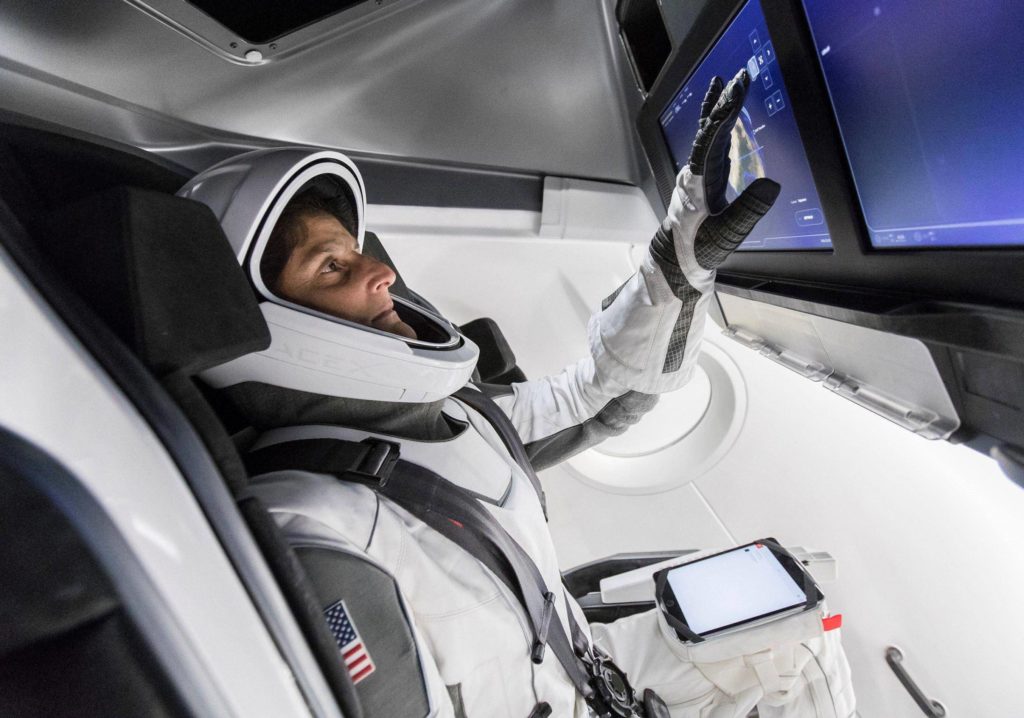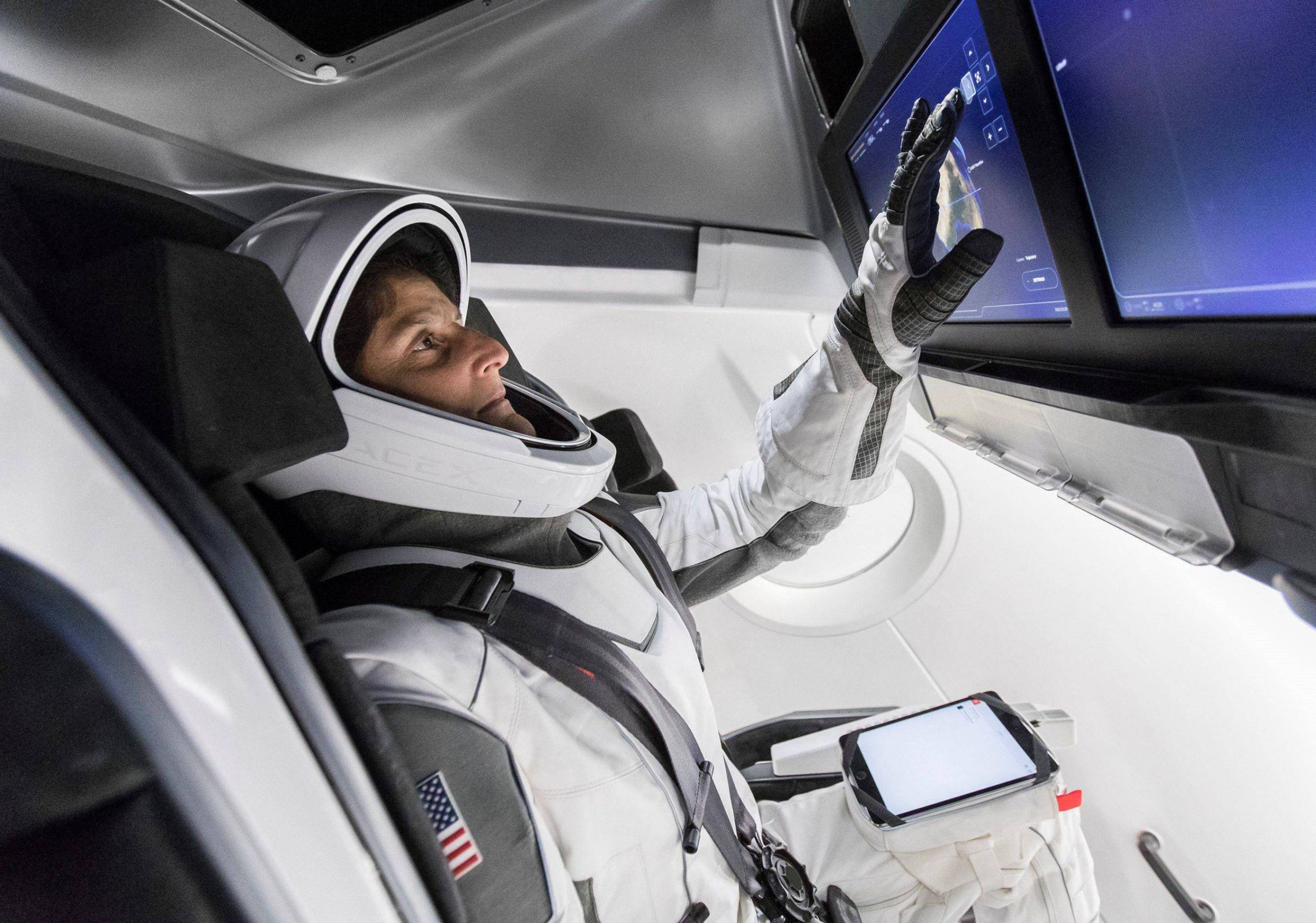
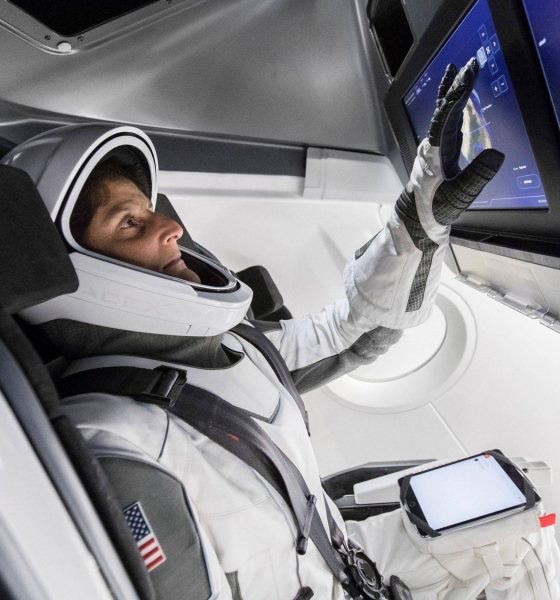
News
SpaceX releases photo of NASA astronauts testing in Crew Dragon spaceship
In a rare instance of publicity, SpaceX has given the public the first detailed glimpse of a NASA astronaut practicing inside a mockup of Crew Dragon’s cockpit, wearing a sleek spacesuit designed and built by private rocket company.
Taken just over a month ago, the photos show astronauts Doug Hurley and Suni Williams familiarizing themselves with the most recent iteration of Crew Dragon’s cockpit, with a focus on the control systems and display system unique to SpaceX’s spacecraft. Boeing, for example, went with a more traditional set of controls, featuring a joystick and panels of physical buttons and switches alongside a pair of small screens, largely reminiscent of cockpits one might find in the many military and civilian aircraft the company’s non-space branches assemble.
- Boeing’s Starliner Pad Abort Test Vehicle is prepping for a test of its launch abort engines to prove that the vehicle can safely perform an abort maneuver in the event of an emergency on the launchpad or during flight. (Boeing)
- Elon Musk: “SpaceX Crew Dragon ship in anechoic chamber for EMI [electromagentic interference] testing before being sent to @NASA Plum Brook vacuum chamber” (SpaceX)
- NASA Astronaut Suni Williams, fully suited in SpaceX’s spacesuit, interfaces with the display inside a mock-up of the Crew Dragon spacecraft in Hawthorne, California, during a testing exercise on April 3. (SpaceX)
SpaceX CEO Elon Musk recently showed off the first official photo of the company’s first flight-ready Crew Dragon capsule preparing for Demo Mission-1 (DM-1), an uncrewed orbital test flight of the brand new spacecraft intended to prove out its capabilities ahead of a true crewed test flight several months after. While officially showing launch dates no earlier than August 31 (DM-1) and December 31 (DM-2), sources familiar with the Commercial Crew Program say that SpaceX is currently tracking towards its first two demo flights sometime in Q4 2018 and H1 2019 respectively, and Musk’s brief comment that the DM-1 Crew Dragon was scheduled for shipment to the launch site (Kennedy Space Center) around August 2018.
SpaceX Crew Dragon ships to the Cape in about 3 months
— Elon Musk (@elonmusk) May 2, 2018
Arrival at the launch site will entail its own series of extensive tests, many focusing on integrated the vehicle with its Falcon 9 Block 5 launch vehicle, perhaps the first time a flightworthy Crew Dragon is attached to a SpaceX rocket. The upgraded Falcon 9s (both new) tasked with launching those first two demonstration missions are themselves already under construction at SpaceX’s Hawthorne, CA factory: the rocket intended to launch the first crewed mission is having its propellant tanks welded, while the vehicle aiming to launch an uncrewed test later this year is likely on its way to final integration and easily recognizable as a rocket.

SpaceX’s Crew Dragon, shown in an older render and a more recent graphic featured in NASA’s March 2018 Commercial Crew update. (SpaceX/NASA)
In fact, what can only be the second Block 5 Falcon 9 booster (B1047) was captured on May 30 by a member of the /r/SpaceX subreddit on the last leg of its journey from McGregor, Texas to Cape Canaveral, Florida, indicating that a Block 5 booster recently glimpsed at SpaceX’s Texas testing facilities is likely a separate rocket, B1048. The booster meant for Crew Dragon’s first flight was confirmed by NASA officials to be B1051 in a March 2018 briefing, and the sighting of B1047 bodes very well for B1051’s shipment from the Hawthorne factory to Texas for static fire testing in the next two or three months, followed by its own journey from Texas to Florida before launching the first Crew Dragon spacecraft into orbit.
Falcon 9 B1047 is believed to be preparing to launch the Telstar 19V communications satellite sometime next month. Meanwhile, SpaceX is currently targeting 12:27am EDT on June 1 for the launch of the SES-12 satellite aboard one of the company’s final three operational flight-proven Block 4 rockets, although mediocre weather conditions place the risk of a scrub at ~60%.

News
Tesla FSD fleet is nearing 7 billion total miles, including 2.5 billion city miles
As can be seen on Tesla’s official FSD webpage, vehicles equipped with the system have now navigated over 6.99 billion miles.

Tesla’s Full Self-Driving (Supervised) fleet is closing in on almost 7 billion total miles driven, as per data posted by the company on its official FSD webpage.
These figures hint at the massive scale of data fueling Tesla’s rapid FSD improvements, which have been quite notable as of late.
FSD mileage milestones
As can be seen on Tesla’s official FSD webpage, vehicles equipped with the system have now navigated over 6.99 billion miles. Tesla owner and avid FSD tester Whole Mars Catalog also shared a screenshot indicating that from the nearly 7 billion miles traveled by the FSD fleet, more than 2.5 billion miles were driven inside cities.
City miles are particularly valuable for complex urban scenarios like unprotected turns, pedestrian interactions, and traffic lights. This is also the difference-maker for FSD, as only complex solutions, such as Waymo’s self-driving taxis, operate similarly on inner-city streets. And even then, incidents such as the San Francisco blackouts have proven challenging for sensor-rich vehicles like Waymos.
Tesla’s data edge
Tesla has a number of advantages in the autonomous vehicle sector, one of which is the size of its fleet and the number of vehicles training FSD on real-world roads. Tesla’s nearly 7 billion FSD miles then allow the company to roll out updates that make its vehicles behave like they are being driven by experienced drivers, even if they are operating on their own.
So notable are Tesla’s improvements to FSD that NVIDIA Director of Robotics Jim Fan, after experiencing FSD v14, noted that the system is the first AI that passes what he described as a “Physical Turing Test.”
“Despite knowing exactly how robot learning works, I still find it magical watching the steering wheel turn by itself. First it feels surreal, next it becomes routine. Then, like the smartphone, taking it away actively hurts. This is how humanity gets rewired and glued to god-like technologies,” Fan wrote in a post on X.
News
Tesla starts showing how FSD will change lives in Europe
Local officials tested the system on narrow country roads and were impressed by FSD’s smooth, human-like driving, with some calling the service a game-changer for everyday life in areas that are far from urban centers.

Tesla has launched Europe’s first public shuttle service using Full Self-Driving (Supervised) in the rural Eifelkreis Bitburg-Prüm region of Germany, demonstrating how the technology can restore independence and mobility for people who struggle with limited transport options.
Local officials tested the system on narrow country roads and were impressed by FSD’s smooth, human-like driving, with some calling the service a game-changer for everyday life in areas that are far from urban centers.
Officials see real impact on rural residents
Arzfeld Mayor Johannes Kuhl and District Administrator Andreas Kruppert personally tested the Tesla shuttle service. This allowed them to see just how well FSD navigated winding lanes and rural roads confidently. Kruppert said, “Autonomous driving sounds like science fiction to many, but we simply see here that it works totally well in rural regions too.” Kuhl, for his part, also noted that FSD “feels like a very experienced driver.”
The pilot complements the area’s “Citizen Bus” program, which provides on-demand rides for elderly residents who can no longer drive themselves. Tesla Europe shared a video of a demonstration of the service, highlighting how FSD gives people their freedom back, even in places where public transport is not as prevalent.
What the Ministry for Economic Affairs and Transport says
Rhineland-Palatinate’s Minister Daniela Schmitt supported the project, praising the collaboration that made this “first of its kind in Europe” possible. As per the ministry, the rural rollout for the service shows FSD’s potential beyond major cities, and it delivers tangible benefits like grocery runs, doctor visits, and social connections for isolated residents.
“Reliable and flexible mobility is especially vital in rural areas. With the launch of a shuttle service using self-driving vehicles (FSD supervised) by Tesla in the Eifelkreis Bitburg-Prüm, an innovative pilot project is now getting underway that complements local community bus services. It is the first project of its kind in Europe.
“The result is a real gain for rural mobility: greater accessibility, more flexibility and tangible benefits for everyday life. A strong signal for innovation, cooperation and future-oriented mobility beyond urban centers,” the ministry wrote in a LinkedIn post.
News
Tesla China quietly posts Robotaxi-related job listing
Tesla China is currently seeking a Low Voltage Electrical Engineer to work on circuit board design for the company’s autonomous vehicles.

Tesla has posted a new job listing in Shanghai explicitly tied to its Robotaxi program, fueling speculation that the company is preparing to launch its dedicated autonomous ride-hailing service in China.
As noted in the listing, Tesla China is currently seeking a Low Voltage Electrical Engineer to work on circuit board design for the company’s autonomous vehicles.
Robotaxi-specific role
The listing, which was shared on social media platform X by industry watcher @tslaming, suggested that Tesla China is looking to fill the role urgently. The job listing itself specifically mentions that the person hired for the role will be working on the Low Voltage Hardware team, which would design the circuit boards that would serve as the nervous system of the Robotaxi.
Key tasks for the role, as indicated in the job listing, include collaboration with PCB layout, firmware, mechanical, program management, and validation teams, among other responsibilities. The role is based in Shanghai.
China Robotaxi launch
China represents a massive potential market for robotaxis, with its dense urban centers and supportive policies in select cities. Tesla has limited permission to roll out FSD in the country, though despite this, its vehicles have been hailed as among the best in the market when it comes to autonomous features. So far, at least, it appears that China supports Tesla’s FSD and Robotaxi rollout.
This was hinted at in November, when Tesla brought the Cybercab to the 8th China International Import Expo (CIIE) in Shanghai, marking the first time that the autonomous two-seater was brought to the Asia-Pacific region. The vehicle, despite not having a release date in China, received a significant amount of interest among the event’s attendees.
